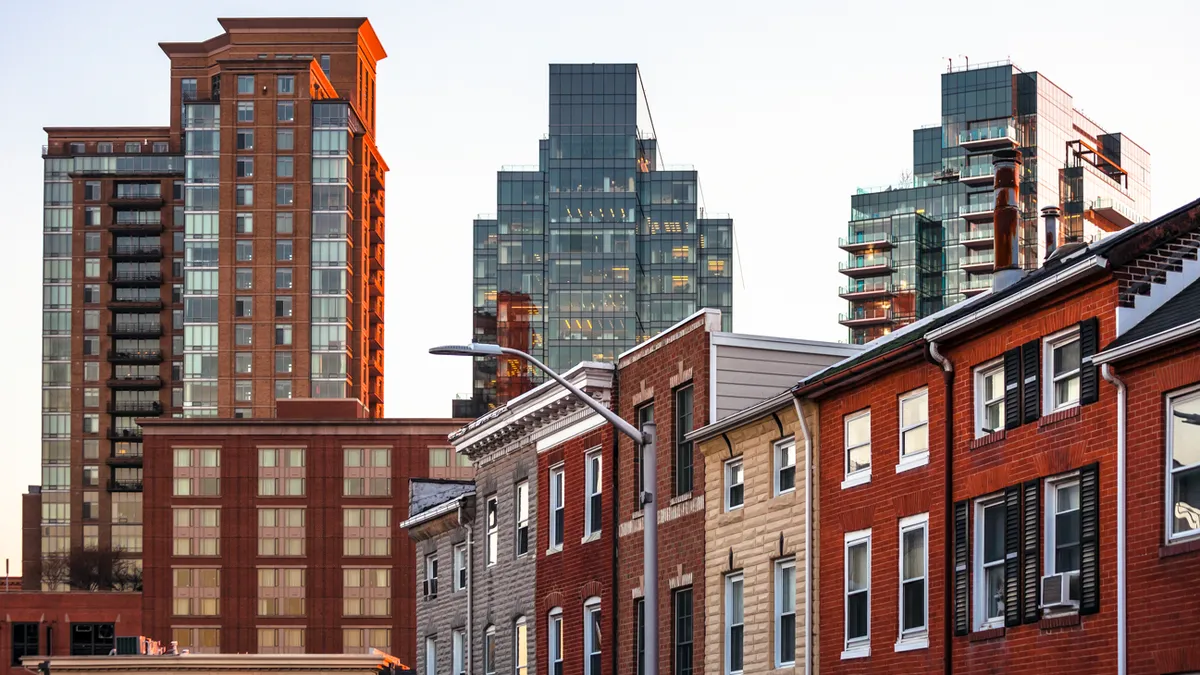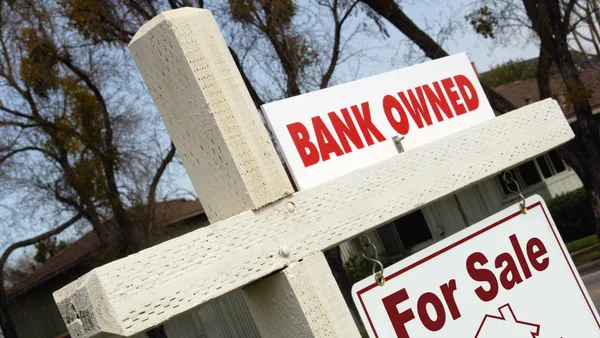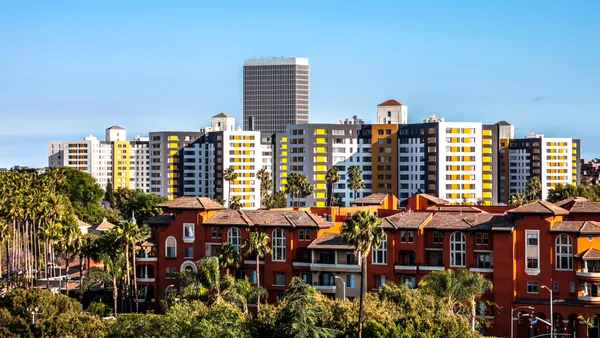The national average multifamily rent fell by $4 from November to December, down to $1,742, according to Yardi Matrix’s latest National Multifamily Report. Year-over-year rent growth fell 10 basis points over the same period, down to 0.6%.
YOY rent growth has remained between 0% and 1.0% over the past 16 months, according to Yardi. Metro-level rent performance has been mixed; high-supply metros have seen negative rent growth throughout the year, while low-supply metros have seen only moderate rent increases.
Austin, Texas, remains the market with the lowest YOY rent growth at -5.9%, followed by Raleigh, North Carolina, at -3.1%, according to the report. Gateway metros in the East and secondary Midwest markets recorded the highest rent growth, with New York City leading at 5.0% YOY.
| Market | YOY rent growth, December 2024 | YOY rent growth, November 2024 | Difference |
|---|---|---|---|
| New York City | 5.0% | 5.0% | 0 |
| Kansas City, Missouri | 3.9% | 3.4% | 0.5 |
| New Jersey | 3.8% | 2.5% | 1.3 |
| Chicago | 3.3% | 2.7% | 0.5 |
| Columbus, Ohio | 3.1% | 2.3% | 0.8 |
| Washington, D.C. | 2.8% | 2.8% | 0 |
| Indianapolis | 2.6% | 2.7% | -0.1 |
| Detroit | 2.5% | 3.2% | -0.7 |
| Baltimore | 2.2% | 2.4% | -0.2 |
| Philadelphia | 1.9% | 1.9% | 0 |
SOURCE: Yardi Matrix
The national occupancy rate was unchanged in November at 94.7%. (Occupancy data is current to the previous month.)
Over the first 11 months of 2024, the national apartment market absorbed 404,000 new units out of 442,000 completed, according to Yardi. While both of these numbers are high by historical standards, regional differences are stark. More units were absorbed than completed in the Midwest — a 20% difference — while the Southwest saw the opposite activity, with 20% more completions than absorptions.
After exhibiting strong growth throughout most of the year, single-family rents hit a decline moving into 2025, the report said. The average rent fell $7 from November to December, down to $2,141, while YOY rent growth for single-family rentals fell 40 basis points to -0.8%.
Past trends, future changes
As 2025 begins, the apartment market is bracing for change, according to Yardi.
“The market enters 2025 walking a tightrope, with heavy supply growth balanced by equally strong demand,” the report said. “Clearly, 2025 promises change. Starts have dropped, and completions will wane soon. On the demand side, absorption will be boosted by healthy job growth and demographics.”
The report also noted that interest rate conditions may not be as favorable as previously predicted. While the Federal Reserve was initially expected to cut short-term rates throughout 2025 to 3% to 4%, inflation has since stalled, and President-elect Donald Trump has threatened tariff increases. This has created high inflation expectations, pushing the 10-year Treasury rate higher and muddying deal flow.
In addition, Trump campaigned on reducing immigration and conducting mass deportations, impacting a strong source of apartment demand in recent years. The U.S. Census Bureau estimates that 2.8 million people moved into the U.S. from outside the country in 2024, making up 84% of total population growth, while a total of 4 million people entered the country in 2022 and 2023.











